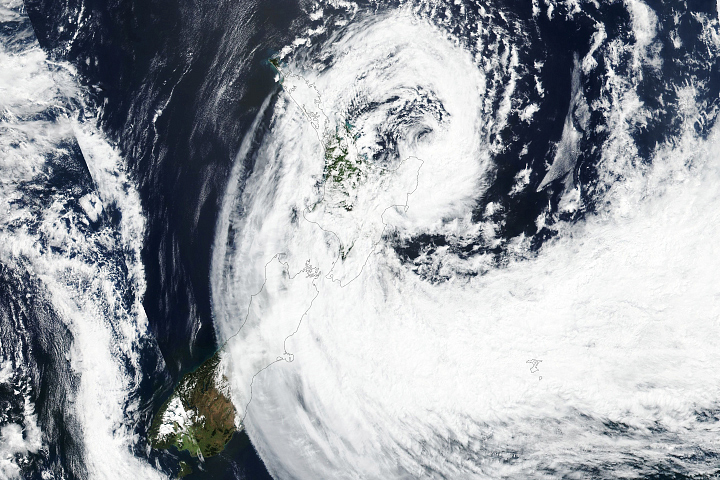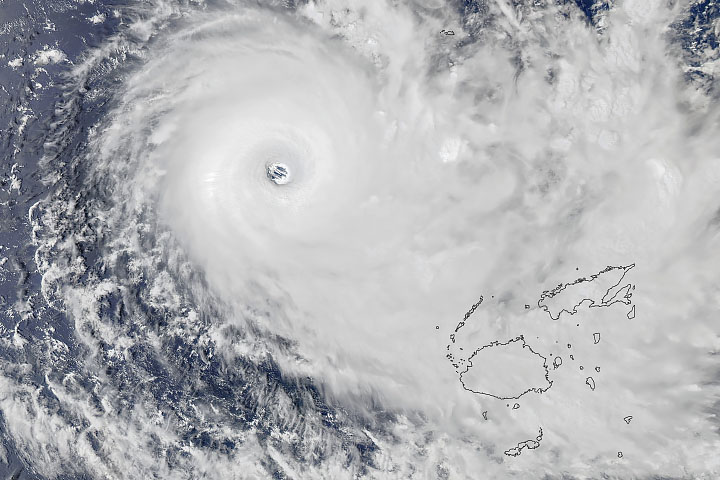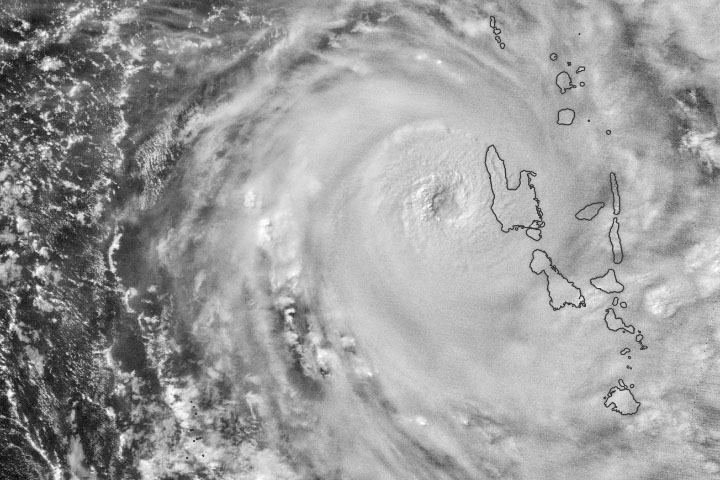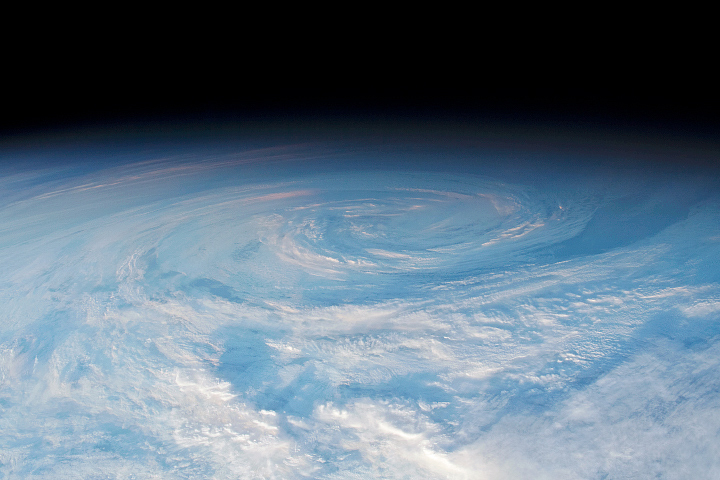

Cyclone Gabrielle lashed New Zealand with strong winds and heavy rain in mid-February 2023, adding to what has already been an unusually wet start to the year. The latest round of extreme weather brought destructive flooding, storm surge, and landslides to the region.
The Visible Infrared Imaging Radiometer Suite (VIIRS) on the NASA-NOAA Suomi NPP satellite acquired this image at about 3 p.m. local time (02:00 Universal Time) on February 14, 2023. It shows Cyclone Gabrielle as it slowly moved toward the southeast. At the time, the storm was centered near the North Island, but its cloud bands spanned much of the country.
Cyclone Gabrielle encountered New Zealand as a powerful subtropical storm after transitioning from a tropical cyclone. Rainfall from the still-powerful storm began falling on the island nation on February 11 and continued for the next several days. Accumulations at Napier Airport (Hawke’s Bay Airport) reached 175.8 millimeters over a 24-hour period from February 13-14. That’s more than three times the average amount typically seen during the entire month of February.
By around 7 a.m. local time on February 15, the cyclone continued to move slowly toward the southeast and away from New Zealand. Still, warnings for heavy rain and swell remained in effect along some central parts of the country.
According to news reports, officials declared a national state of emergency—only the third such declaration in the country’s history. The storm left hundreds of thousands without power, led to the cancelation of flights, and has damaged roads, homes, and infrastructure.
The drenching rains in February follow a storm that hit the country in late January. During that storm, parts of Auckland saw all-time daily rainfall records, which contributed to the city’s wettest January on record.
According to the New Zealand’s meteorological service, an average of 10 tropical cyclones form in the tropical South Pacific each year between November and April. Of those, about one will affect New Zealand as an ex-tropical cyclone, most often in February or March.
NASA Earth Observatory image by Lauren Dauphin, using VIIRS data from NASA EOSDIS LANCE, GIBS/Worldview, and the Suomi National Polar-orbiting Partnership. Story by Kathryn Hansen.
Image of the Day Atmosphere Severe Storms
The storm’s heavy rain in mid-February 2023 has added to an unusually wet start to the year.
Image of the Day for February 15, 2023
Warm ocean temperatures can promote storms in the region, though the wide spacing between the many small islands make landfalls less common.



